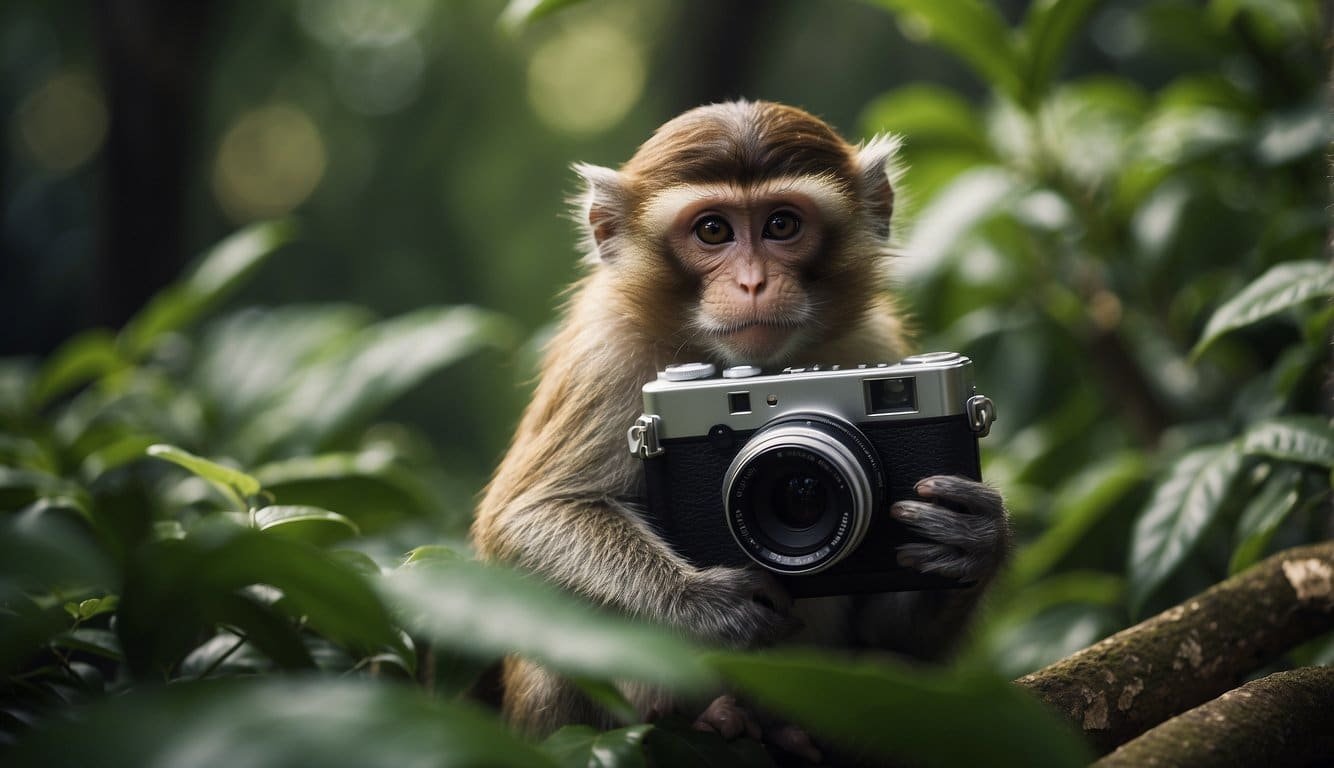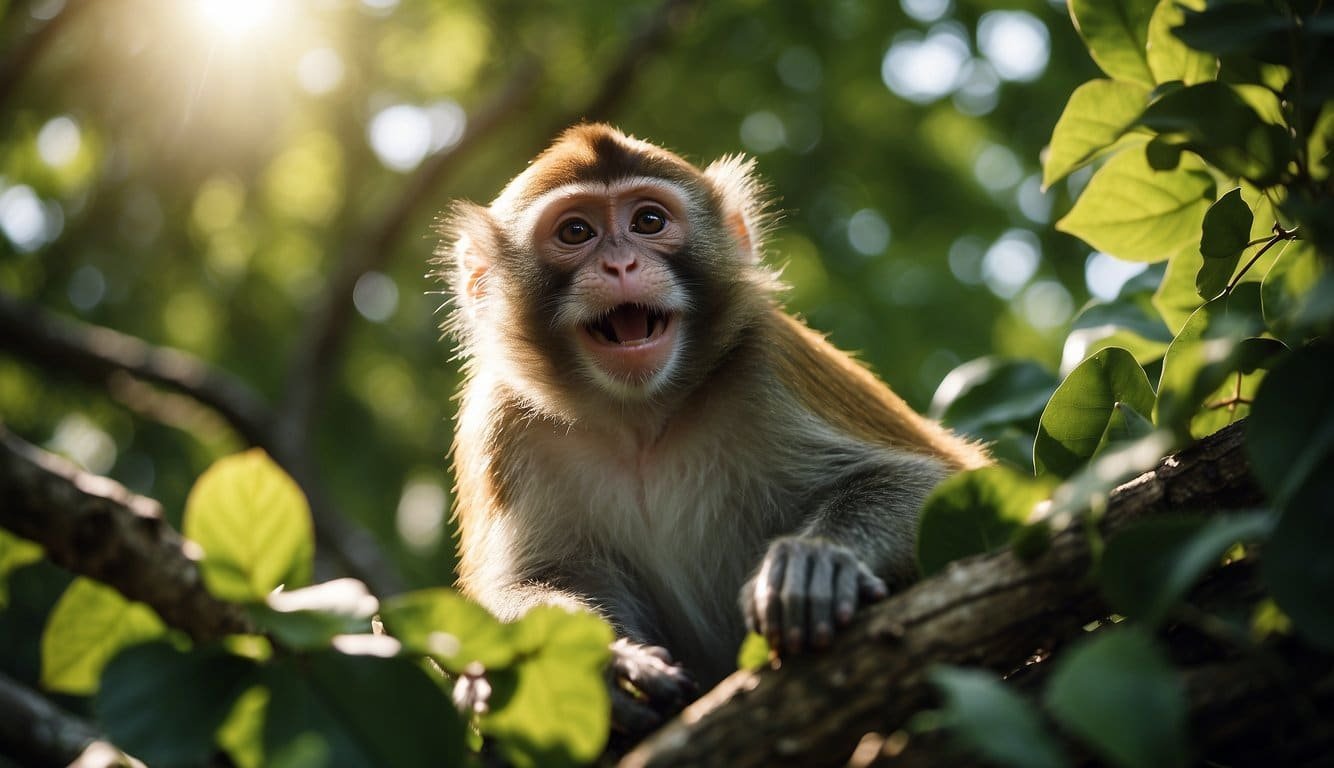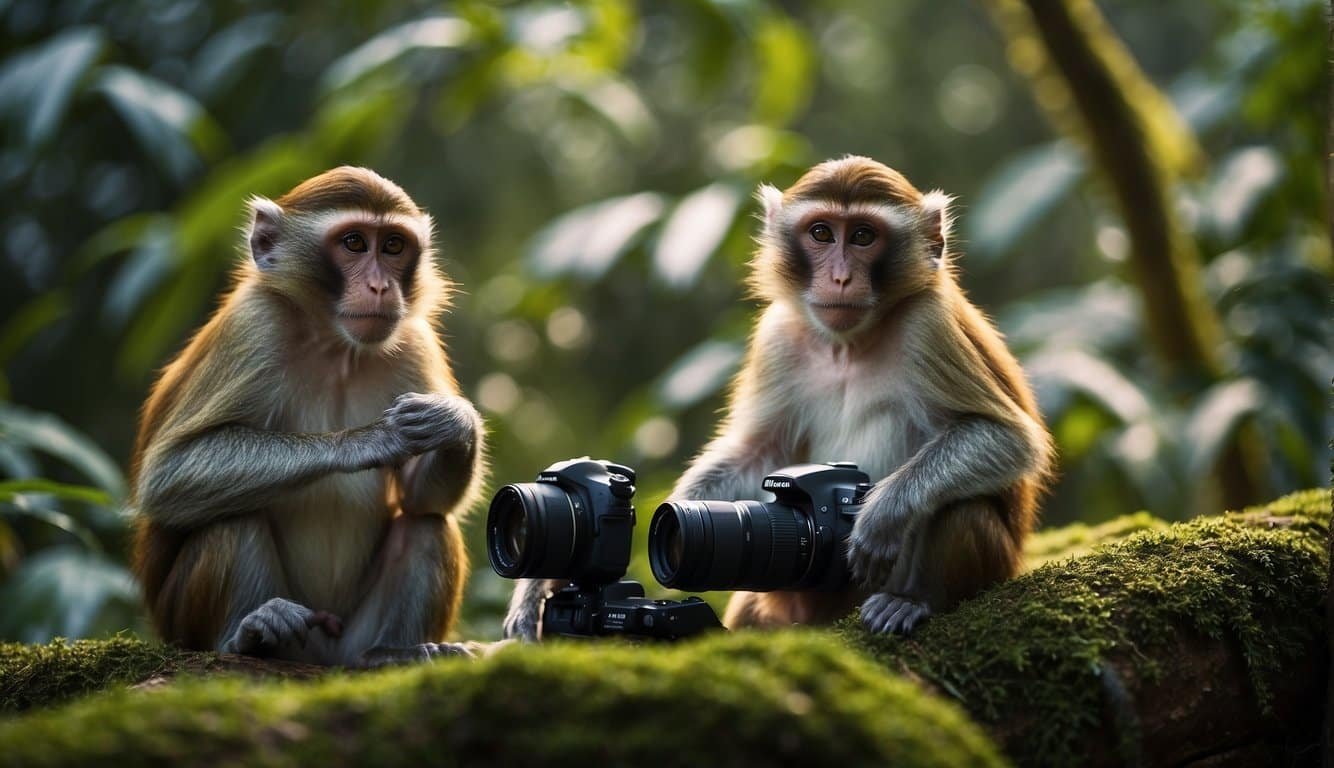Understanding Monkey Photography

Monkey photography involves capturing images or videos of monkeys in various settings, whether for scientific, educational, or artistic purposes. It requires a thoughtful approach to engage viewers while ensuring the responsible portrayal and treatment of the animals.
Ethical Considerations
When clicking photos or recording videos of primates, one must respect their well-being and natural habitat. Encountering media that could be seen as adult content or inappropriate in a workplace or school setting is generally a concern when browsing online. However, monkey imagery rarely falls into this category, and most visual search engine algorithms, such as SafeSearch, are designed to filter out unsuitable content. Photographers have to navigate the fine line between representation and exploitation, making sure to depict the subjects with dignity. Additionally, there is a continuing conversation about copyright when it comes to images taken by animals themselves, like the famous case highlighted in a study where a monkey’s selfie caused a legal stir, raising questions about creativity and ownership. (Going Bananas Over Copyright)
Technical Aspects
Photographing monkeys puts a photographer’s skills to the test, as these animals often move unpredictably. Detailed knowledge of camera settings such as shutter speed, aperture, and ISO – paired with a rapid response to the monkeys’ movements – can make the difference between a blurred image and a stunning portrait. A study concerning monkey self-portraits explores such photographic phenomena, encouraging a deeper understanding of how these images are captured and the role of the subject in self-representation. Lighting plays a crucial role as well, especially when trying to capture the nuanced expressions of monkeys without using artificial means that could disrupt their behavior. The type of equipment used needs to be unobtrusive and versatile, allowing for a swift adaptation to the changing environments where these primates are found.
Finding Monkey Photos

When looking for monkey photos, potential platforms range from stock photo websites to individual photographer portfolios. These resources cater to a variety of needs, whether one is seeking free images or high-resolution pictures available through subscription services.
Stock Photo Platforms
Stock photo platforms like Pixabay and Getty Images offer extensive collections of monkey images. Pixabay provides a wealth of free photos that include a myriad of monkey species, perfect for casual browsing or finding visuals for a presentation. For those seeking exclusive content, Getty Images presents a premium access program, which offers high-quality images of monkeys, some of which are unique to their site. Both platforms are accessible via iOS and Android apps, ensuring users can browse and download images on-the-go.
Photographer Portfolios
To find more unique and sometimes intimate representations of monkeys, diving into photographer portfolios might uncover the perfect shot. Many wildlife photographers host their own collections and often sell prints or digital copies. These portfolios are treasure troves not just for photos, but also for stories behind the images, giving insight into the behaviors and habitats of these fascinating animals. One can find creators with extensive experience and a compelling array of monkey photographs ready to share with the world.
Sharing and Managing Monkey Content

When sharing images and tales of monkeys across various platforms, brands have a unique opportunity to spark interest and engagement. But managing and sharing this monkey content in a way that grows a brand requires a considered approach.
Best Practices for Brands
Companies should employ a media manager or a digital asset management system to efficiently organize and control their monkey-themed digital content. This ensures easy distribution across networks while maintaining the brand’s authenticity. Sharing brand content that is both authentic and customized can captivate the audience’s attention.
Organizing images and videos of monkeys through these systems not only streamlines the process but also provides valuable data-driven insights. By measuring how the content performs, brands can better understand their audience and tailor their approach. For example, a photo of a Macaque monkey categorizing images may resonate differently with audiences compared to a post focused on monkey behavior, and analyzing this data can help brands optimize future content.
As the digital landscape evolves, so too should the strategies for managing and sharing monkey content. Considering this, building a comprehensive network for distributing these visuals becomes crucial. By doing so, brands can ensure their content remains aligned with their image and resonates with their desired audience, helping them to not just share content but to genuinely grow their brand presence.

